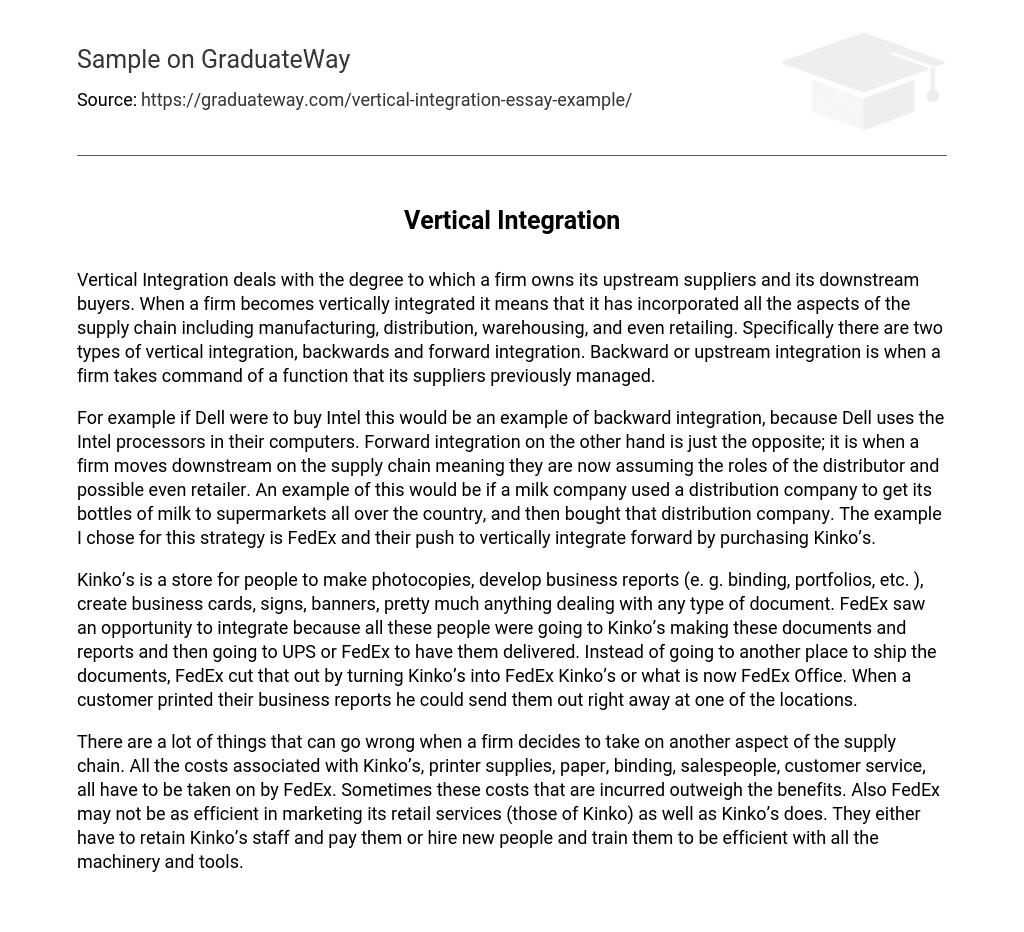Vertical Integration is when a company has control over its suppliers and buyers in both directions. This means the company has integrated all aspects of the supply chain, including manufacturing, distribution, warehousing, and retailing. There are two types of vertical integration: backward integration and forward integration. Backward integration happens when a company takes on a function that used to be done by its suppliers.
An example of backward integration would be if Dell were to acquire Intel, as Dell utilizes Intel processors in their computers. Conversely, forward integration occurs when a company moves downstream on the supply chain, taking on distribution and retail roles. For instance, if a milk company used a distribution company to deliver their milk bottles to supermarkets nationwide, and then acquired that distribution company. FedEx’s pursuit of vertical integration forward can be exemplified by their acquisition of Kinko’s.
FedEx saw an opportunity to integrate with Kinko’s, a store that offers photocopying, business report development (including binding and portfolios), creation of business cards, signs, banners, and other document-related services. Previously, individuals would visit Kinko’s for these services and then go to UPS or FedEx for document delivery. However, FedEx eliminated the need for customers to visit another location by transforming Kinko’s into FedEx Kinko’s (now known as FedEx Office). This allowed customers to print their business reports and immediately send them out from the same location.
When a firm decides to expand into another aspect of the supply chain, there are numerous potential problems. FedEx, for example, must take on the costs associated with Kinko’s, including expenses for printer supplies, paper, binding, salespeople, and customer service. However, these expenses may outweigh the benefits. Moreover, FedEx may not possess the same level of expertise in marketing retail services compared to Kinko’s. Consequently, they must either retain qualified Kinko’s staff and provide them with compensation or hire and train new employees to efficiently handle machinery and tools.





